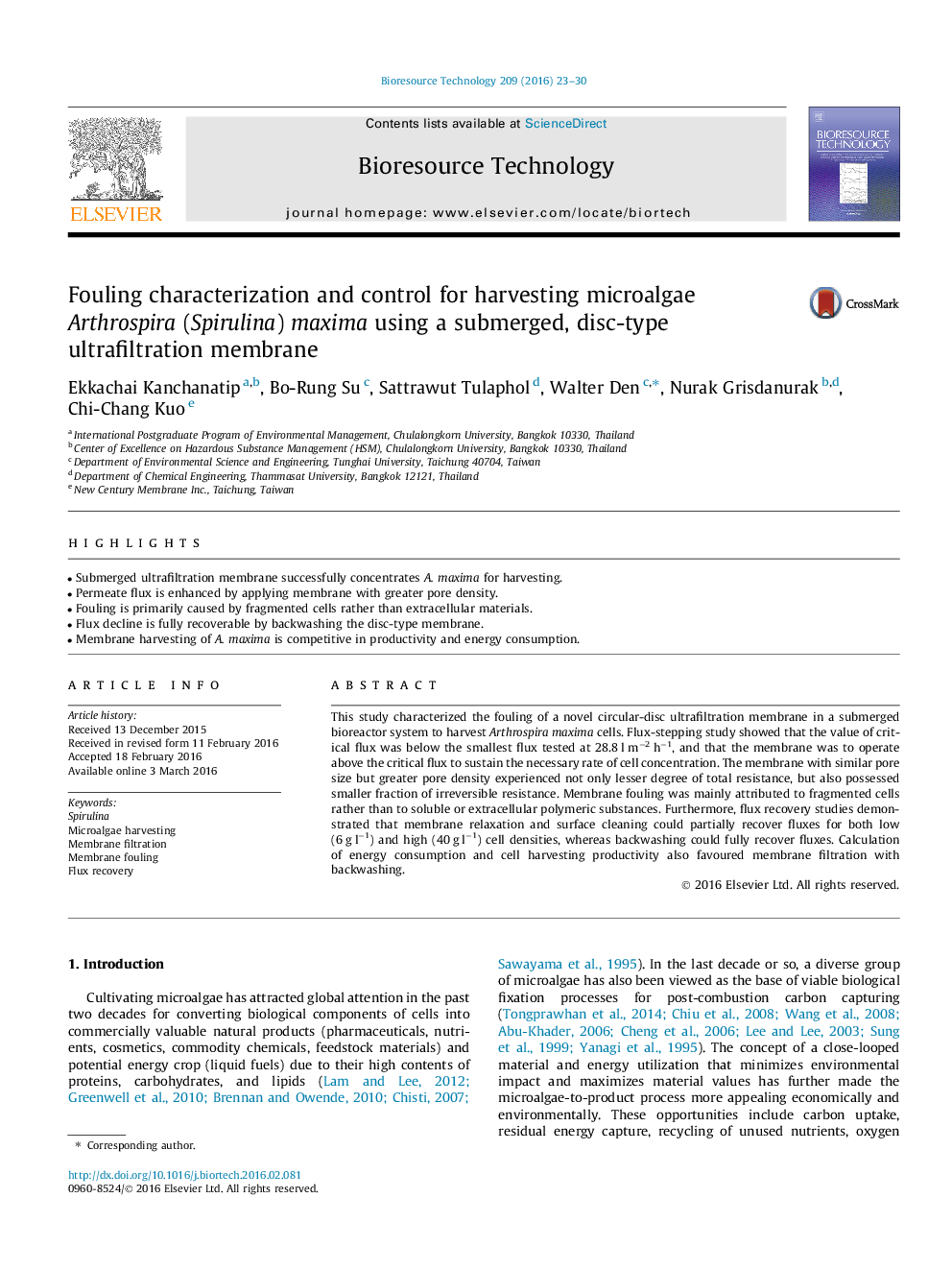| Article ID | Journal | Published Year | Pages | File Type |
|---|---|---|---|---|
| 679196 | Bioresource Technology | 2016 | 8 Pages |
Abstract
This study characterized the fouling of a novel circular-disc ultrafiltration membrane in a submerged bioreactor system to harvest Arthrospira maxima cells. Flux-stepping study showed that the value of critical flux was below the smallest flux tested at 28.8 l mâ2 hâ1, and that the membrane was to operate above the critical flux to sustain the necessary rate of cell concentration. The membrane with similar pore size but greater pore density experienced not only lesser degree of total resistance, but also possessed smaller fraction of irreversible resistance. Membrane fouling was mainly attributed to fragmented cells rather than to soluble or extracellular polymeric substances. Furthermore, flux recovery studies demonstrated that membrane relaxation and surface cleaning could partially recover fluxes for both low (6 g lâ1) and high (40 g lâ1) cell densities, whereas backwashing could fully recover fluxes. Calculation of energy consumption and cell harvesting productivity also favoured membrane filtration with backwashing.
Related Topics
Physical Sciences and Engineering
Chemical Engineering
Process Chemistry and Technology
Authors
Ekkachai Kanchanatip, Bo-Rung Su, Sattrawut Tulaphol, Walter Den, Nurak Grisdanurak, Chi-Chang Kuo,
